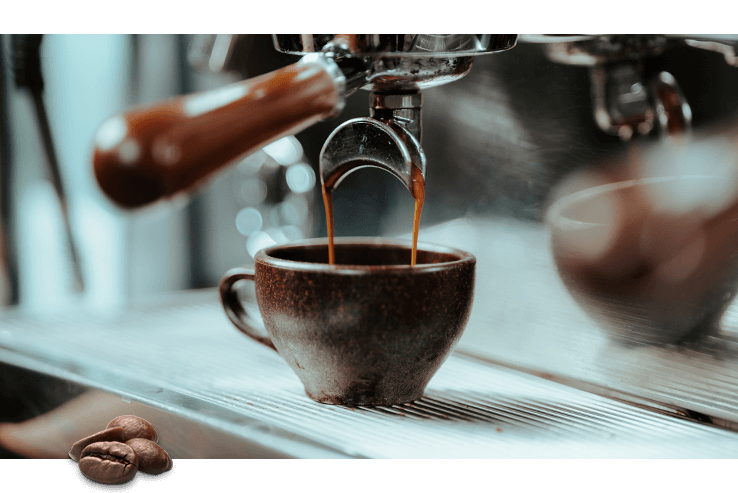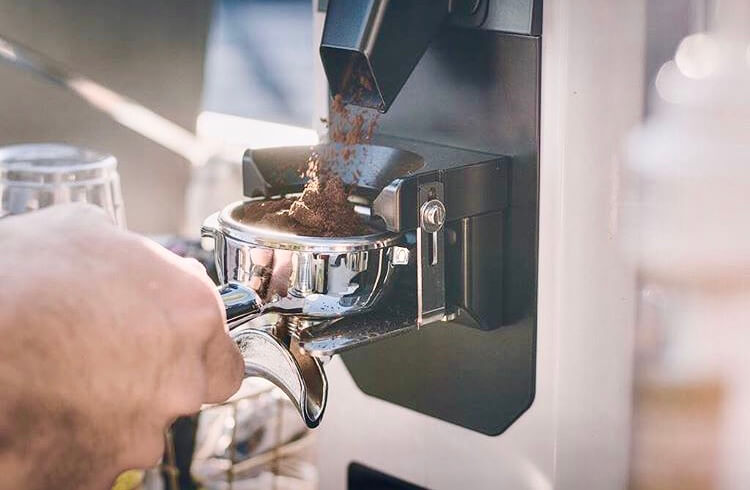Discover the Distinctive Flavor Profile of SOE Single Origin Espresso Today
Wiki Article
Checking Out the Rich Tastes of Coffee Beans: a Deep Study Espresso and Blended Coffee Beans
When you discover the rich flavors of coffee beans, you discover a complex world where each range brings its very own personality to your cup. As you browse with the art of coffee and the imagination behind combined coffees, you'll start to appreciate the subtleties that make each sip unique.The Beginnings of Coffee Beans: Exploring Terroir and Flavor Profiles
When you take a sip of coffee, you're not just delighting in a beverage; you're experiencing a rich tapestry of flavors shaped by the beans' beginnings. Each region generates special taste profiles affected by altitude, soil, and environment. For example, beans from Ethiopia often rupture with bright, fruity notes, while those from Colombia have a tendency to supply a balanced, nutty sweet taste.As you discover different origins, you'll observe how terroir-- the environmental aspects influencing a plant-- plays a crucial duty - Single Origin Espresso. The same coffee range can taste substantially different depending upon where it's expanded
When you take into consideration these factors, you start to appreciate the complexity behind your cup. Each sip informs a tale of the land and the farmers that supported the beans. So, next time you indulge, consider the journey your coffee took before it reached your hands, and enjoy those complex tastes that mirror its beginning.
Recognizing Coffee: The Art and Science Behind the Brew
When you think about coffee, it's not almost the strong flavor; it's also concerning the methods that bring it to life. Comprehending how different preparation methods impact preference can change your brewing experience. Allow's discover the ins and outs of espresso prep work and discover the distinct flavor accounts that make each cup special.Coffee Preparation Strategies
Coffee prep work is both an art and a scientific research, combining specific methods with a deep understanding of coffee. To start, you'll wish to select top quality, freshly roasted beans and grind them carefully for suitable extraction (Single Origin Espresso). The work dimension is vital; also rugged, and your coffee will certainly be weak, too great, and it'll be bitterFollowing, tamp the grounds uniformly in the portafilter to guarantee uniform removal. When you lock it right into the machine, go for a brewing temperature level between 190 ° F and 205 ° F.As you draw the shot, watch for the ideal extraction time-- around 25-30 secs. The outcome should be an abundant, creamy coffee with a lovely layer of crema on top. With method, you'll master these strategies.
Taste Profiles Described
The world of espresso uses a rich tapestry of taste profiles that can raise your coffee experience. When you take that first sip, you'll observe an equilibrium of sweetness, acidity, and anger. Each espresso bean carries distinct notes, from fruity and flower to nutty and chocolaty. Light roasts frequently showcase brilliant acidity and lively tastes, while dark roasts existing much deeper, bolder tones.Recognizing these accounts assists you select the ideal espresso for your taste buds. Trying out different blends can reveal unexpected combinations. A well-crafted blend might harmonize the intense notes of an Ethiopian bean with the abundant, chocolatey touches of a Brazilian bean. Embrace the journey of uncovering coffee's diverse flavors, and you'll change your coffee routine into an exciting journey.
Handling Techniques: How They Impact Flavor and Fragrance
While it may seem that the origin of coffee beans is one of the most considerable consider establishing their taste and aroma, the handling methods made use of post-harvest play a similarly vital duty. You'll find that these approaches can dramatically change the final preference profile of your mug.As an example, the washed process gets rid of the fruit from the beans before fermentation, often causing a cleaner, brighter flavor. At the same time, the natural procedure leaves the fruit undamaged throughout drying out, resulting in a sweeter, fruitier profile.
Other approaches, like honey processing, strike an equilibrium, allowing some fruit mucilage to stay, providing an SOE one-of-a-kind complexity.
Each processing strategy interacts with the beans' intrinsic qualities, boosting or silencing particular tastes and fragrances. So, when you sip that coffee or combined coffee, bear in mind that the journey from cherry to mug is affected not just by origin however additionally by how those beans were processed.
Toasting Methods: Opening the Complete Potential of Coffee Beans
Roasting strategies are crucial for disclosing the complete possibility of coffee beans, as they change raw, environment-friendly beans right into the aromatic, tasty coffee you enjoy. The option of roasting method-- light, tool, or dark-- dramatically affects taste accounts.You can explore roasting times and temperatures to find your excellent mixture. A slower roast at lower temperature levels permits complex flavors to create, while a quicker roast can escalate bitterness. Pay interest to the cracks throughout toasting; the initial split suggests a light roast, while the second crack signals a dark roast. By understanding these methods, you'll reveal a globe of taste, elevating your coffee experience to brand-new elevations. Take pleasure in every sip, understanding the care that went right into your cup!
The Magic of Blended Coffee: Developing Distinct Taste Experiences
Producing an unique taste experience with blended coffee can transform your early morning ritual right into an exploration of preference. By combining various beans from various areas, you can reveal a harmony of flavors that boost your cup to brand-new heights. Each mix deals an unique account, balancing sweet taste, body, and acidity to produce something genuinely unique.When you pick a blend, you're not simply selecting a coffee; you're selecting a trip throughout diverse landscapes and cultures. Trying out different mixes permits you to discover your personal faves, whether you enjoy fruity notes or rich, chocolatey touches.

Sampling Notes: Recognizing the Nuances in Your Cup
As you sip your coffee, you may see a range of flavors dancing on your palate, each revealing the details of the beans. You might taste the intense level of acidity reminiscent of citrus or the deep, rich notes akin to dark chocolate. The sweetness might evoke honey or caramel, balancing the overall account perfectly.Take note of the body of the coffee-- does it really feel ventilated and light, or is it complete and luscious? The coating, also, supplies ideas; a remaining aftertaste might mean nuttiness or floral undertones.

Do not fail to remember to explore the unique characteristics of various beginnings, as each region imparts distinctive tastes - Single Origin Espresso. As an example, Ethiopian coffees frequently present fruity notes, while Colombian beans could showcase a more spherical sweetness. By recognizing these subtleties, you'll strengthen your appreciation for each and every mug, elevating your coffee experience to brand-new heights

Developing Techniques: Taking Full Advantage Of Flavor Removal for each Bean
When you discover the various brewing approaches, you'll find that each technique can considerably affect the taste profile of your coffee. From French press to pour-over, each method essences different substances, boosting or silencing specific notes. Utilizing a French press allows oils to continue to be in the brew, producing a richer preference, while pour-over highlights quality and brightness.Temperature level and grind dimension also play crucial roles. A coarser work functions best for cold mixtures, while a great grind is excellent for espresso. Explore water temperature level-- between 195 ° F and 205 ° F-- can expose surprise flavors, as well.
Do not ignore soaking time; a fast extraction can cause sour notes, while over-extraction might generate bitterness. By changing these variables, you can maximize flavor extraction and genuinely boost your coffee experience. Delight in the trip of uncovering what method best fits your taste buds!
Regularly Asked Inquiries
What Is the Ideal Water Temperature for Brewing Coffee?
The optimal water temperature level for brewing coffee's in between 195 ° F and 205 ° F. If you use water that's too hot, you'll over-extract flavors; as well chilly, and you won't draw out sufficient. Go for that wonderful area for the ideal mixture!Just How Does Work Dimension Influence Coffee Taste?
Work dimension substantially influences coffee taste. Better grinds remove extra oils and tastes, causing a bolder preference, while coarser grinds return a lighter taste. Changing grind size helps you achieve your desired coffee account.Exist Wellness Conveniences Linked With Alcohol Consumption Coffee?

What Is the Difference In Between Arabica and Robusta Beans?
Arabica beans are smoother and sweeter, usually featuring fruity flavors, while robusta beans are more powerful with a bitter preference and higher caffeine web content. You'll observe these differences in aroma and developing experience.Exactly How Can I Store Coffee Beans for Quality?
To keep coffee beans for freshness, keep them in an impermeable container, far from wetness, light, and heat. You'll maintain their taste longer if you just grind what you need right before developing.Exploring the Abundant Flavors of Coffee Beans: a Deep Dive Into Coffee and Blended Coffee Beans.
When you check out the rich tastes of coffee beans, you uncover an intricate world where each selection brings its own personality to your cup.When you take a sip of coffee, you're not simply delighting in a beverage; you're experiencing a rich tapestry of tastes formed by the beans' origins.Roasting strategies are vital for revealing the full possibility of coffee beans, as they transform raw, environment-friendly beans into the fragrant, flavorful coffee you take pleasure in.As you sip your coffee, you may see a spectrum of tastes dancing on your taste, each exposing the intricacies of the beans.
Report this wiki page